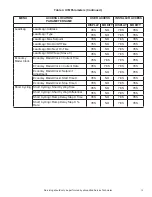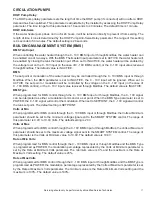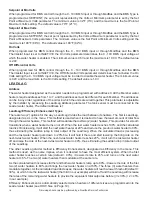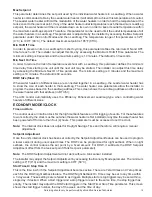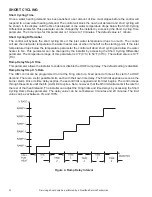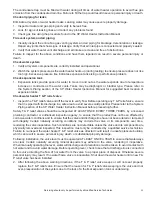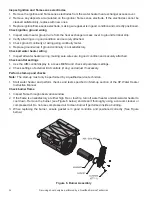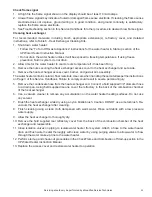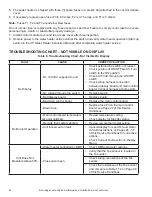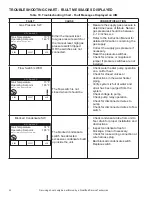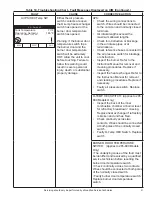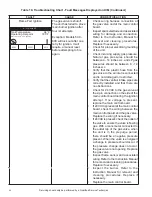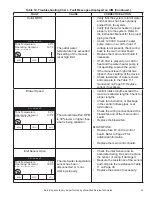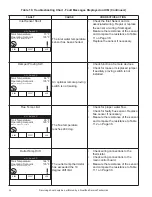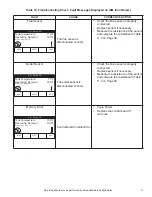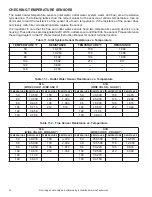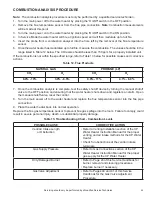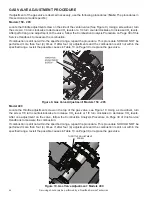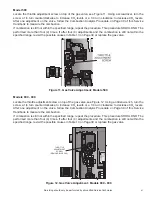
29
Servicing should only be performed by a Quali
fi
ed Service Technician
TROUBLESHOOTING CHART - NOISY SYSTEM
Table 9. Troubleshooting Chart - Noisy System
FAULT
CAUSE
CORRECTIVE ACTION
Noisy Operation
- Supply gas problem. Natural
gas pressures should be between
4 inches w.c. and 14 inches w.c.
LP gas pressures should be
between 8 inches w.c. and 14
inches w.c.
• Refer to Gas Connections section of the
XP Water Heater Instruction Manual for
detailed information concerning the gas
supply.
• If fuel type conversion has been
performed, make sure that the
conversion was completed properly.
- Gas/air mixture problem.
• Refer to the Gas Valve Adjustment
Procedure on Pages 40-41 of this
Service Handbook for the proper gas
valve setting. Verify that the vent/
air intake lengths do not exceed
the maximum listed in the General
Venting section of the XP Water Heater
Instruction Manual.
- Dirty/damaged burner.
• Refer to Page 24 in this Service
Handbook for the burner removal and
inspection procedure. Clean or replace
the burner as necessary.
- Low water
fl
ow through the heat
exchanger.
• Refer to System Piping section of the
XP Water Heater Instruction Manual for
minimum
fl
ow rates.
- Air in the piping system.
• Properly purge all air from the piping
system.
- Low system water pressure.
• Verify system pressure is a minimum of
12 PSI.
No Pump Operation
- Blown fuse.
• Replace fuse F1 on the control board,
see Page 27 of this Service Handbook.
- Faulty pump.
• Replace pump.
- Faulty pump relay.
• Replace pump relay.
- Internal fault on control board.
• Check voltage to the pump from main
control board in order to determine
failure.
• Replace main control board.
T & P relief valve
Opening
- System pressure exceeds T & P
relief valve setting.
• Lower the system pressure below the
150 PSI rating of the supplied T & P relief
valve.

